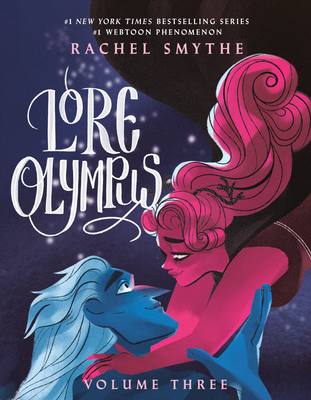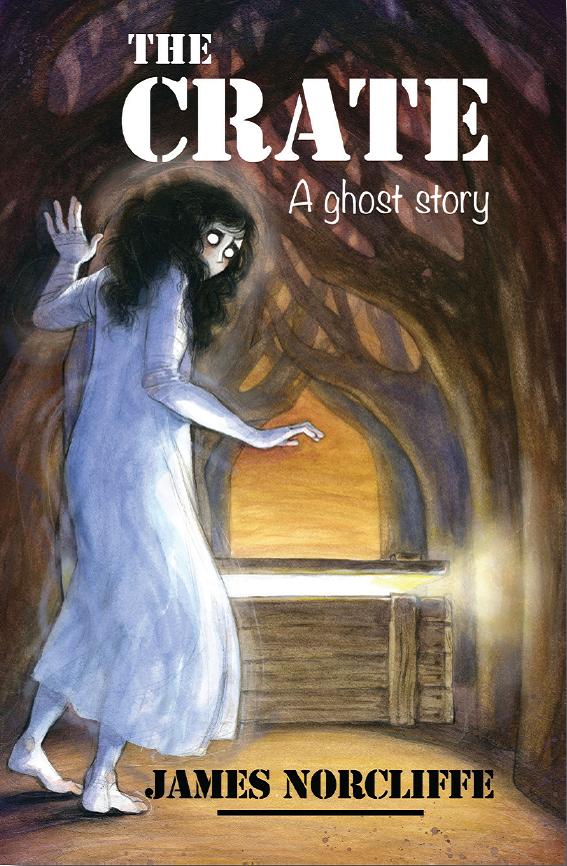Cassie Hart reviews two YA books that delve into the mythical realm. From a retelling of Hades and Persephone to a mystery novel with a supernatural twist, these novels are sure to offer ultimate escapism.

Lore Olympus Volume Three, by Rachel Smythe
Spoilers for Volumes One and Two ahead. Content warning for rape/sexual assault, trauma.
I came to this world late, but now I never want to leave.
Lore Olympus was something that existed on the periphery of my knowledge. I’d heard of it, seen some panels online as well, and thought the art style was beautiful. Most importantly, I knew it was a Hades and Persephone retelling, which I have a great fondness for; there is something alluring in the figure of Persephone, who flows between her role of Goddess of Spring and Queen of the Underworld. It was not until I laid my hands on these books that I realised they were created by a New Zealander, which bumped my level of hype up by a lot; it’s always exciting to know of a locally created work that is doing so well out there in the rest of the world.
Now, you don’t go into a retelling of these lovers with a question of whether they’ll get together—they will—the real intrigue is in the world and how they find their way to each other, and in how Persephone harnesses her true power, her wholeness. And Lore Olympus is a glorious addition to the long list of retellings.
There is something alluring in the figure of Persephone, who flows between her role of Goddess of Spring and Queen of the Underworld
So, where do we begin? Let me set the stage for you, briefly, before I jump into Volume Three. But I implore you to read this series from the start if your interest is piqued—it’s worth it.
At the beginning of Lore Olympus, Persephone is a nineteen-year-old, naïve girl who finally leaves the care of her overbearing mother in the Mortal Realm to go to study in Olympus. This is her first foray into the mythical world, and it comes with rules. First up, she is there on a scholarship from The Goddesses of Eternal Maidenhood (TGOEM), which means that she must remain virginal, and secondly, while she lives in Olympus, she’s to do so under the roof of Artemis—who is a member of TGOEM herself.
This volume of Lore Olympus continues the story of Persephone as she begins to stretch herself and learn more about who (and what) she is, as well as test some of the relationships that she has been developing with other characters.
Hades is now officially dating Minthe, a nymph who he’s had a casual on-and-off relationship with. We know that she’s not the one he really wants, but after learning just how young Persephone is, and that she is a prospective member of TGOEM, he commits to Minthe in order to keep himself away from the object of his desire. She deserves to live the life she wants, not be tempted away from her path by him.
I implore you to read this series from the start if your interest is piqued—it’s worth it
And yet the two of them can’t seem to stay apart for long. Persephone has become an intern in the Underworld, and Hecate, knowing how Hades really feels, has him give the young goddess a tour of the place.
There is a natural respect between the two of them, and we can see from their dialogue that they are flirty at times, but more than that, there is this sense of ease between them. They are open with each other, playful, but also deep, and the fact that Hades listens and respects her—treats her like an interesting person, with her own opinions—is really appealing to Persephone. They both have growing to do, but there is nothing quite so delightful as seeing the stoic, frosty King of the Underworld turn gooey over his future queen.
It’s important to note that while he is very attracted to her, Hades is never a creep with Persephone. There are several situations in which he could have stepped over that line, but his choices are always to care for and protect her, rather than take advantage.
One of my favourite things about this volume is the sensitive way in which Persephone’s rape by Apollo is dealt with. While the incident occurs in Volume One, it’s been festering under the surface for her, impacting the way she relates to others from less obvious things such as not wanting to have her photo taken, to the visceral response she has to being grabbed. We also see the way that her pain and grief over this event are beginning to come out as rage, and I can’t wait to see how this develops over the rest of the series.
This volume of Lore Olympus continues the story of Persephone as she begins to stretch herself and learn more about who (and what) she is
Eros turns up after Persephone finally admits that she has a crush on Hades, and when he can sense that she’s no longer a virgin but can’t speak to him about it, he asks her to show him instead.
At this point, the book absolutely broke me. It’s beautiful, and I don’t think I have ever cried so hard reading a graphic novel as I have reading this. Eros instantly names the act for what it was; there is no couching it in other terms or brushing it off. Persephone is in denial about it because at one point she said it was okay, but he tells her that nobody should be able to come into your room, wake you up, and nag you for sex—that’s not consent.
This is such an important message, and Eros speaks it in such a compassionate way, assuring Persephone that it wasn’t okay, that she did nothing wrong, and that it’s alright for her to have complicated feelings about what happened. He also encourages her to seek therapy, and then takes her home with him in a purely platonic, no-ulterior-motives way other than wanting to provide comfort to his friend.
We need to see more men portrayed this way. And we need to hear this message from many different sources. Consent is such an important issue, and I wish every young person could be given this message in such a caring way—before they need to hear it.
When I first came across the trigger warnings, I was nervous about letting my teens read this, but after finishing the book, I know that it’s a positive way to consume this kind of information. We can see Persephone is going to have challenges in her recovery from this traumatic event, but I also know she has good friends, and wise words in her ear, and I want my kids to see that—to be that person if they ever need to, and to seek the kind of friends who would do the same.
Consent is such an important issue, and I wish every young person could be given this message in such a caring way—before they need to hear it
On a less serious note, the art in this volume is stunning, and this is consistent throughout the series. Each character has a colour palette of their own, with different families sometimes sharing colours. Hades’ blue and Persephone’s pink contrast and complement each other so nicely on the page, creating images that really pop. I confess to looking at my friends and family and wondering what colours they would be in the world that Smythe has created.
Relationships are one of the things I loved most about this particular volume—we see so many different dynamics, both healthy and unhealthy, between friends, family, and lovers. It’s refreshing to see such a range. Characters have thoughts and feelings but don’t always act on them, and we also see people feel remorse for actions they have taken but regret, as well as those who embrace their inner villain and run with it.
I could rave about Lore Olympus for hours, but I think it’s best shared with others in the know. If you love the old myths and retellings, gorgeous art, important conversations, and a huge cast of interesting characters, then I can definitely recommend this series.
Lore Olympus Volume Four is out in June 2023 and it can’t come soon enough.

The Crate, by James Norcliffe
The Crate is a young adult mystery novel set in Tunamoana, a fictional version of many small towns that come to life over summer, where people go to get away from it all. It evokes that feeling so well, I found myself thrown back in time, remembering the random cottages of family friends who I have no recollection of, but whose dwellings were all similar: close to a lake, or a beach, a river perhaps. Inside you’d find an assortment of classic books that you have no real interest in reading, movies you’ve seen fifty times before, puzzles with some of the pieces missing, shabby furniture and none of the mod-cons of your regular home.
It’s a true getaway from modern life, and one that I imagine a lot of kids don’t get these days—very few places are without some kind of internet access or mobile phone coverage now. And while these things exist in the town, they play a minimal role in the unfolding of this mystery.
As such, it feels like it’s set outside of time. You enter Tunamoana, and leave the rest of the world behind. I think this allows the reader to step away from the real and into the paranormal aspects of this novel—because this is no ordinary mystery. There is a strange figure in white, who stalks the young cast of the novel as they explore the graveyard and other areas around the town, getting steadily closer to them as you turn the pages.
[The book] feels like it’s set outside of time. You enter Tunamoana, and leave the rest of the world behind
Speaking of a young cast, this book features only a handful of characters: siblings Danny and Amy, their dad, cousin Jack, a girl they meet during the book, Skip, and Skip’s hippy/mystic mother Jessie, alongside a scattering of secondary characters who manage to make the town feel lived in.
Not long after arriving at the bach, called Bide-a-Wee, a strange old man comes to deliver a wooden crate. It’s incredibly heavy and takes both the man and the siblings’ father to haul it into the house. Only, when the kids give in to temptation and open it, there is nothing inside. Except for a damp piece of lake weed, that is. The family spend quite a bit of time mulling over this puzzle, and exploring the concept of Occam’s Razor—primarily that the simplest answer is the most likely. The mystery plays out across the whole book and leads us into the history of the town, folks that lived there before, and the tragic loss of a girl who is presumed to have drowned in the lake.
The mystery plays out across the whole book and leads us into the history of the town, folks that lived there before, and the tragic loss of a girl who is presumed to have drowned in the lake
The main character of the book is Danny, it’s from his first-person perspective that we see events unfold. We know very little about him—or his relatives for that matter—so he is easy for young readers to relate to and put their own impressions on. There are no ages given for any of the characters. We know that they are old enough for their father to leave them at the bach unattended, but at the same time, their dialogue and banter is suggestive of younger teens. There is also no mention of what school year they are in, what the age gap is between the siblings, whether they have boyfriends or girlfriends back at home, or even any particular hobbies or passions.
On one hand, this creates a kind of timelessness to the characters—they could be any age from about eleven—and there is no real mention of anything that might date the book, or place it in a specific time period aside from ‘contemporary.’ But on the other hand, I felt as though the lack of detail or exploration of who these characters are meant that the book was a little too simple to really engage older teen readers.
While I know that particular demographic would prefer something with a bit more complexity, this doesn’t take away from the fact that it’s a real page-turner. I couldn’t stop reading it, and had to keep going to find out what was happening—where had the crate come from, and for what reason?
There are plenty of spooky moments, enough to delight most readers
Added interest comes from Skip, who the relatives meet near the lake, and who serves as the most diverse character in the book. She is smoking when they first see her; a habit she has picked up from her mother, but one she quickly ditches. We know that she has led a more troubled life, comes from a single-parent home, and is a recent transplant to sleepy Tunamoana.
Jessie, Skip’s mother, introduces elements of the mystical to go with the paranormal. She lives in a bus, reads palms and has a knack for knowing what is to come. Danny, Amy, and Jack all seem uncomfortable with this, but especially Amy, whose reading freaks Jessie out, subsequently scaring all of the children. There are plenty of spooky moments, enough to delight most readers. The story concludes in a satisfyingly dramatic way, with some elements coming into play that I hadn’t predicted—which can either be a good thing, or not, depending on how you like your mysteries.


Cassie Hart
Cassie Hart (Kāi Tahu) is an award-winning author of speculative fiction. She lives nestled between Taranaki Maunga and the ocean, where she nurtures children, cats, and story ideas.



